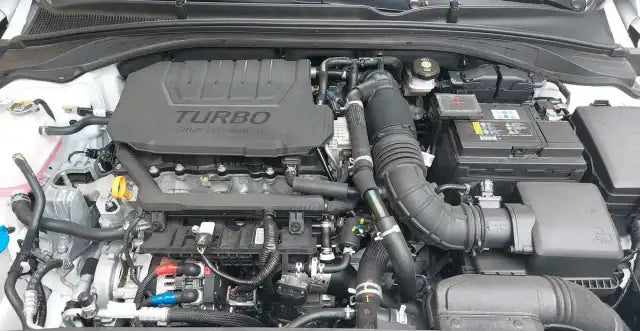Engine flushes have become increasingly popular over the years as a method for maintaining and caring for various types of engines. However, these products still pose a mystery to many drivers who often wonder how to use them and whether they are truly beneficial. Today, we aim to clear up any confusion by explaining how to flush your engine before an oil change with an engine flush and why considering such a service might be worthwhile. Dive into the rest of this guide prepared by the TEC 2000 expert team and discover that flushing your engine is not as complicated as it might seem. Welcome, and we hope you find this reading informative.
How to flush your engine? Choose the right engine flush
Many drivers often wonder how to effectively clean the interior of their engines from the accumulated debris. Over the years, various methods have been devised to flush out the engine, but unfortunately, not all of these methods have proven effective or, worse, safe for the engine.
In the past, kerosene was a popular choice among drivers for engine cleaning. However, using kerosene to flush the engine has not yielded significant results, as it lacks components that can remove baked-on residues. The days of using kerosene are long gone – today, the best option is to opt for a high-quality engine flush. This product is formulated with solvents and strong detergents that dissolve the dirt and debris inside the engine, ensuring a thorough cleaning.
Using an engine flush – how to apply it?
If you're wondering how to use an engine flush, here's some good news: the process isn't complicated. However, it's crucial to first review the manufacturer's instructions for the specific cleaning product you plan to use. Since formulations can vary, understanding the recommendations can prevent potential issues. So, how do you apply an engine flush? We've outlined the entire process below using the TEC 2000 Engine Flush as an example.
- Start by warming up the engine to the optimal coolant temperature of about 60°C, then turn off the ignition.
- Next, proceed by unscrewing the oil filler cap and pouring the engine flush into the existing engine oil.
- Screw the cap back on, start the engine, and let it idle for approximately 15 minutes.
- Afterward, perform an oil change which includes removing the oil filter, draining the old lubricant along with the flush, installing a new filter, and filling with fresh oil.
- Start the engine for about 30 seconds and then shut it off.
- Finally, check the oil level and top up if necessary to reach the correct level.
How much engine flush should you use?
Typically, a single can of the product is enough to effectively remove contaminants. To illustrate with a specific example, the TEC 2000 Engine Flush comes in a 375 ml can, which is sufficient for 4-5 liters of oil. This amount ensures that the flush can thoroughly clean the engine's interior without the need for additional cans.
How to Apply Engine Flush: Order Matters!
When using an engine flush, the sequence of steps is crucial. Keep in mind the following:
- Add the flush to the engine oil before draining the old oil, not after the oil change.
- Wait several minutes after adding the flush before draining the mixture; if you drain it too quickly, the flush won't have time to circulate through the engine and collect the tougher contaminants.
However, there's more to consider if you want to properly flush your engine. It's important to perform the engine flush outdoors. Consider that the procedure involves running the engine; in an enclosed space, like a home garage, it’s easy to be overwhelmed by the buildup of exhaust fumes, especially in a small area. This can pose a significant safety risk.
Why should you regularly use an engine flush?
Using an engine flush primarily provides an opportunity to effectively remove the contaminants that accumulate inside the engine, including carbon build-up. While some may be skeptical about the necessity of flushing, believing that a regular oil service is sufficient, the reality is somewhat different. Ordinary motor oil alone cannot remove the most stubborn contaminants that lodge in the hard-to-reach areas of the engine, such as the piston rings and oil passages. A high-quality engine flush features much stronger dissolving properties and, importantly, spreads throughout the entire engine, reaching places that regular engine oil cannot.
From here, we recommend trying the TEC 2000 Engine Flush, currently considered one of the most effective engine flushing products on the market.




Leave a comment
This site is protected by hCaptcha and the hCaptcha Privacy Policy and Terms of Service apply.